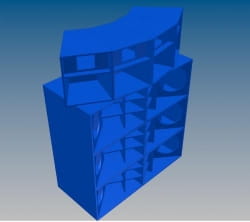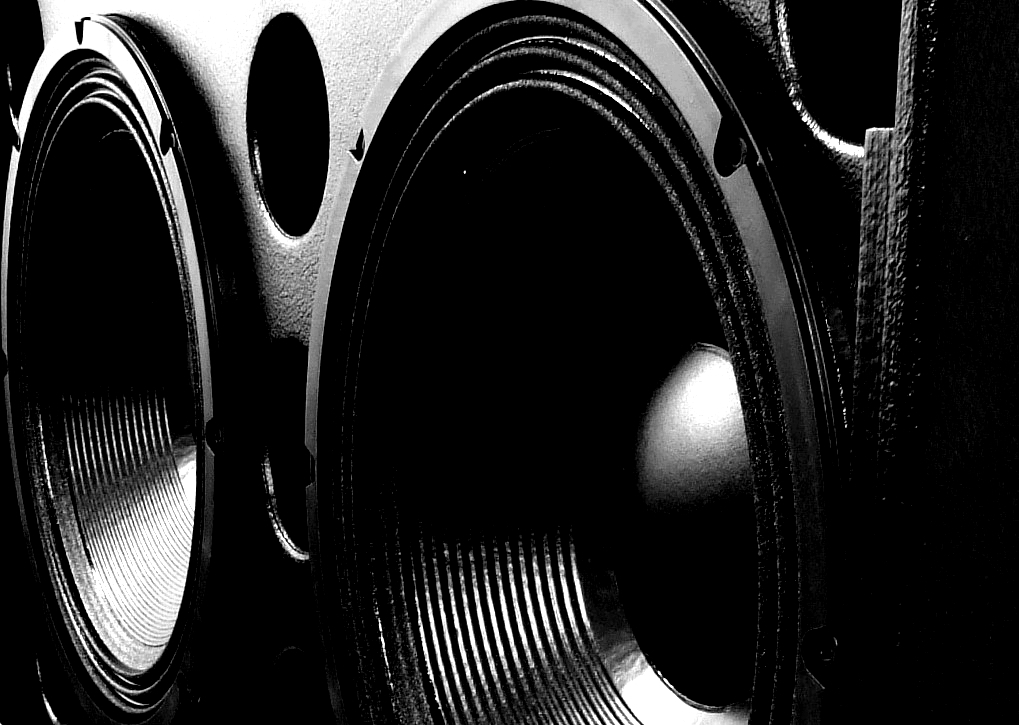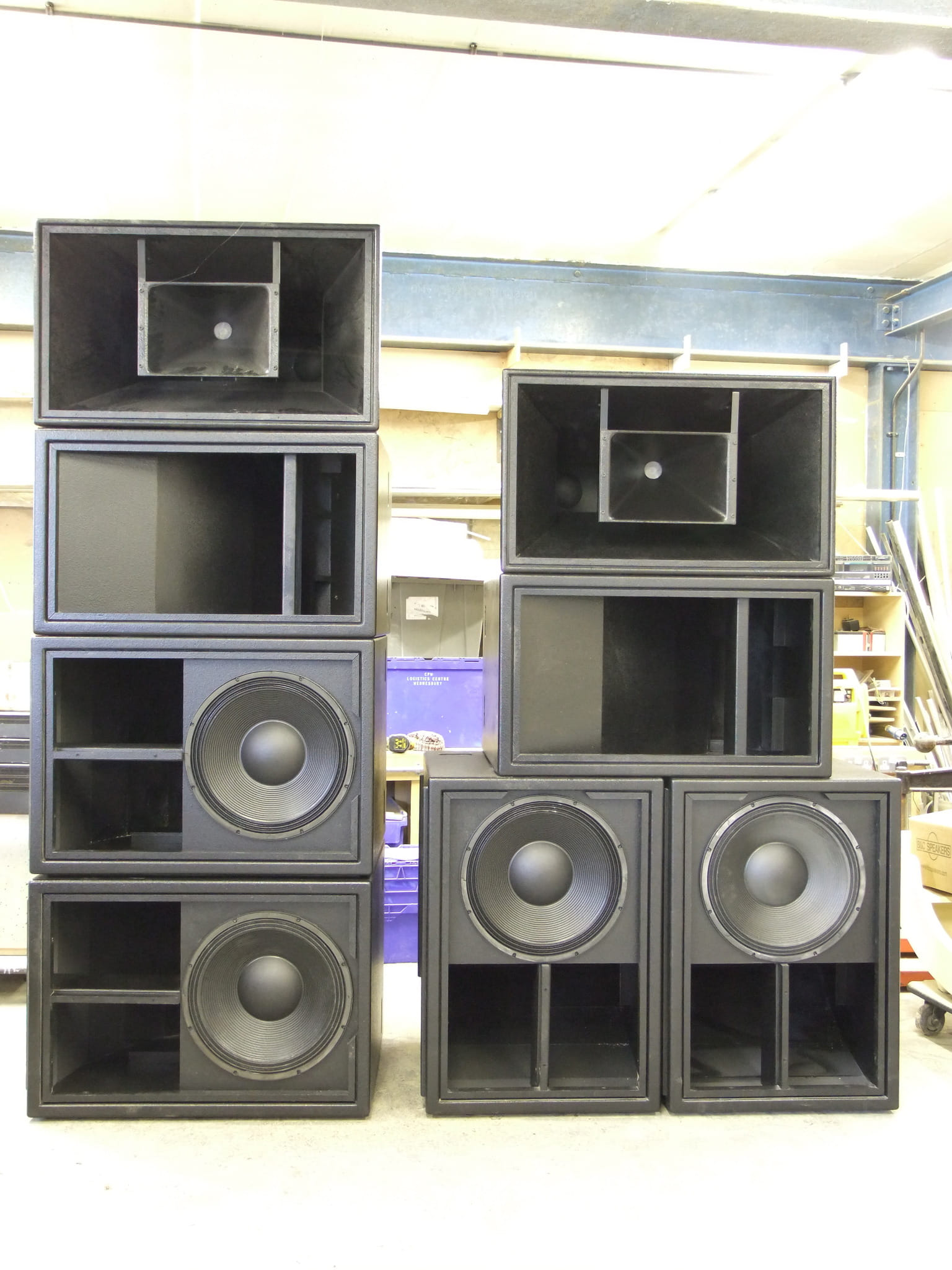- Posts: 397
- Thank you received: 0
FSP-ARRAY
- heathrow_b_line
-
 Topic Author
Topic Author
- Offline
- Platinum Member
-

I would like a box that could be flown/stacked to give a good throw and even coverage in a compact cabinet. response from 70hz upto 20khz. fully horn loaded
is there any similar boxes i can have a look at?
Produce a killer sound. Take no prisoners.
Please Log in or Create an account to join the conversation.
- marjanm
-

- Offline
- Junior Member
-

- Posts: 24
- Thank you received: 0
Please Log in or Create an account to join the conversation.
- heathrow_b_line
-
 Topic Author
Topic Author
- Offline
- Platinum Member
-

- Posts: 397
- Thank you received: 0
Produce a killer sound. Take no prisoners.
Please Log in or Create an account to join the conversation.
- deadbeat
-

- Offline
- Platinum Member
-

For proper long throw (you can use less woofers as the BP's efficiency dictates 4x12s
if we were to wade very very far out, I can sort of imagine doing a DIY polyhorn.
Beranek\'s law
\'bits of ply round a driver\'
Please Log in or Create an account to join the conversation.
- heathrow_b_line
-
 Topic Author
Topic Author
- Offline
- Platinum Member
-

- Posts: 397
- Thank you received: 0
Produce a killer sound. Take no prisoners.
Please Log in or Create an account to join the conversation.
- deadbeat
-

- Offline
- Platinum Member
-

You can actually do most of it using a spreadsheet or a calculator. The equivalent of hornresp would be a math cad program.
Edited by: Deadbeat
Beranek\'s law
\'bits of ply round a driver\'
Please Log in or Create an account to join the conversation.
- deadbeat
-

- Offline
- Platinum Member
-

The oblate spheroid waveguide is similar, however I am unsure about the dispersion, an axisymettrical waveguide would be the easiest to design but have some problems with lobes etc, but an elliptical one (I have been lurking on diyaudio following the waveguide thread as well) would have some small problems (though not as complex as a horn as with a waveguide, the cross sectional is irrelevant) with the expansion from circular to elliptical to superelliptical. Any ideas? I am thinking either a 90 x 90 symettrical as in the Summa (and VQ, i think?), or a 90x40/50/60 elliptical (once I figure out how to get that onto paper properly...) Then there is the issue of the foam to bung in it, should I use some (it will sound nicer, like a directly radiating paper cone, due to less higher order modes, but will lower the efficiency) and just have a less powerful LF section?
Also, with regard to construction, I am thinking of getting the CNC to make a reverse profile of the waveguide, then fibreglassing round it. The waveguide will not have an abrupt mouth termination (blah blah reflections blah) but have either a radius to the flat plane or a catenoid.
PS
Does anyone have experience with Apple Grapher?
I am mainly using Mathcad on my workstation (unavailable atm, I am away hence the apple grapher reference), and am currently trying to learn how to use Wolfram Mathematica (as well as other programs, blech).
the CAD/CAM operation is based on Vectorworks.
Beranek\'s law
\'bits of ply round a driver\'
Please Log in or Create an account to join the conversation.
- tony.a.s.s.
-

- Offline
- Moderator
-

- Posts: 1344
- Thank you received: 12
Just to point out that the companies that do line array systems can spend more time on the metal work than the cabs. Array cabs have to work as a system and not necessarily as an individual cab. The ability to come up with the flying rig is the thing that would make this a reality.
Peace and goodwill to all speaker builders
Please Log in or Create an account to join the conversation.
- deadbeat
-

- Offline
- Platinum Member
-

I realise I went on a bit of a tangent with my ultra-top sekrit
project, and no, mine doesn't have to be flown, just has to be ground
stacked, (well, the synergy clone may be adapted....)
i think I'm going to concentrate on a synergy clone for this thread.
Ideas? Dispersion? Drivers? I am debating between sticking everything in the
conical horn or having a BP / hornloaded section below it.
Beranek\'s law
\'bits of ply round a driver\'
Please Log in or Create an account to join the conversation.
- jsg
-

- Offline
- Elite Member
-

- Posts: 236
- Thank you received: 0
Tony.A.S.S. wrote: Just to point out that the companies that do line array systems can spend more time on the metal work than the cabs. Array cabs have to work as a system and not necessarily as an individual cab. The ability to come up with the flying rig is the thing that would make this a reality.
I've seen some examples of line array cabs being used in very short lines to good effect. My local club in Cambridge has 3 of the small DB cabs per side, in a short vertical line. And Fabric in London has 2 of the Martin large-format line array cabs per side and it sounds unbelievably good.
This is an example of practical experimentation winning over the theory, so I guess youmight approve of that.
Anyway,the thinking is if you can get good results with as few as 2 line array cabs per side, then they don't need to be flown - just stacked on top of the bass with props to get them at the right angle. So something like this might be practical for FSP, and yet comparable insome waysto one of the world's leading clubs.
Ars est celare artem
Please Log in or Create an account to join the conversation.